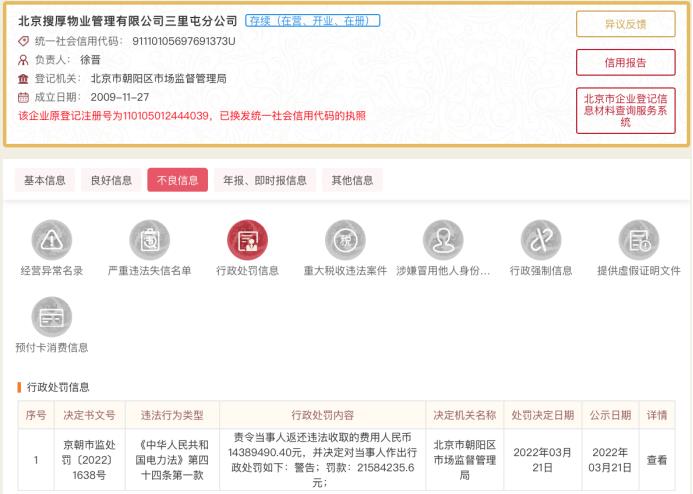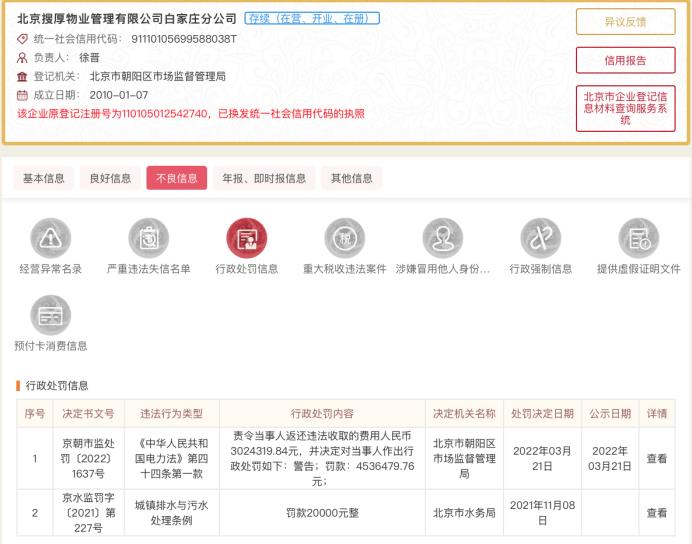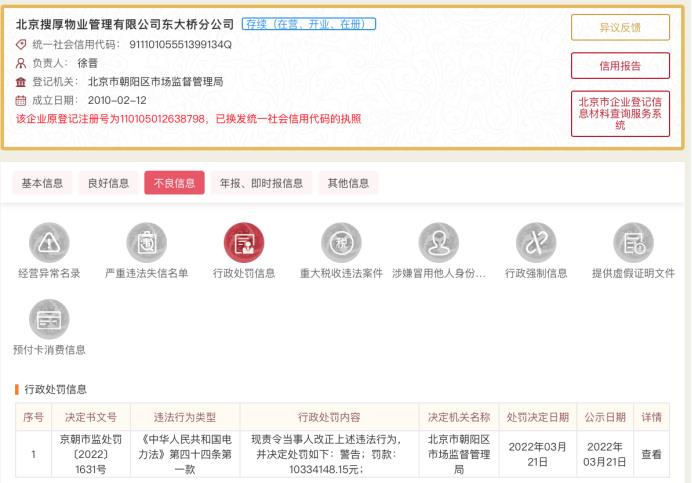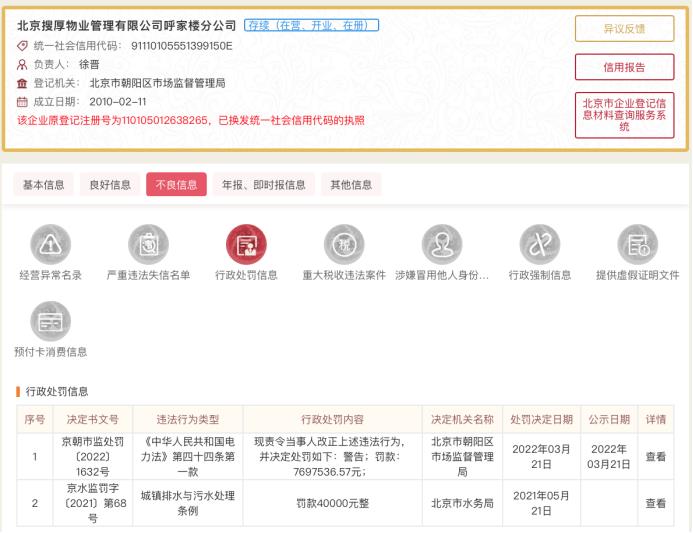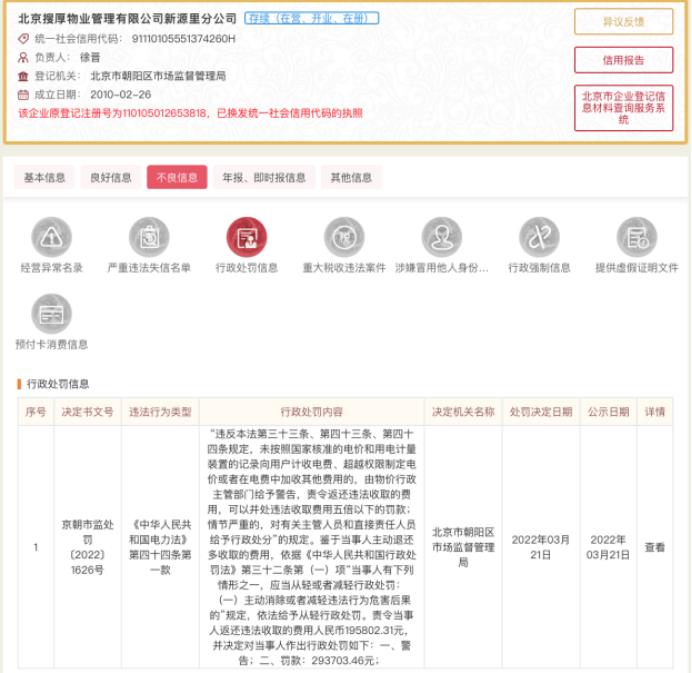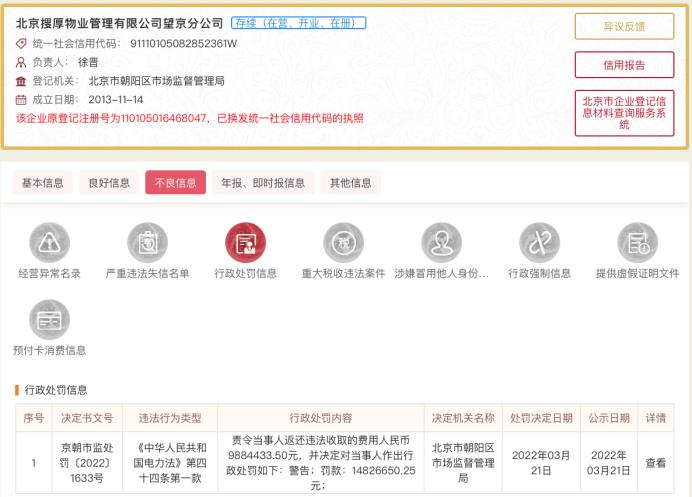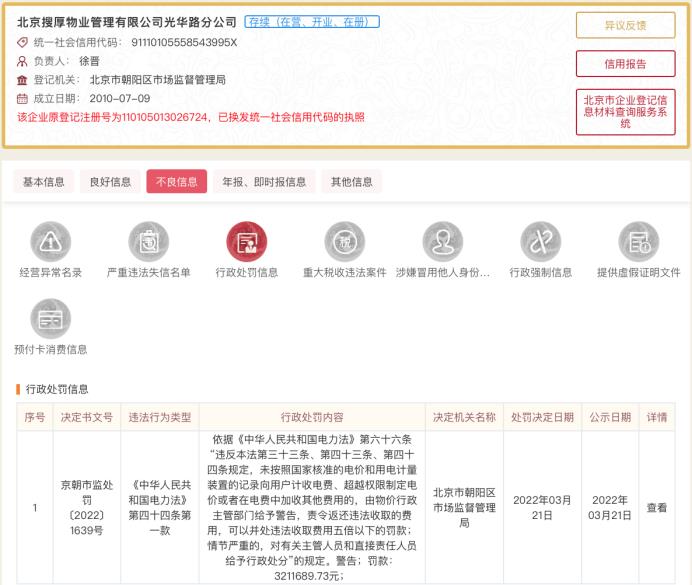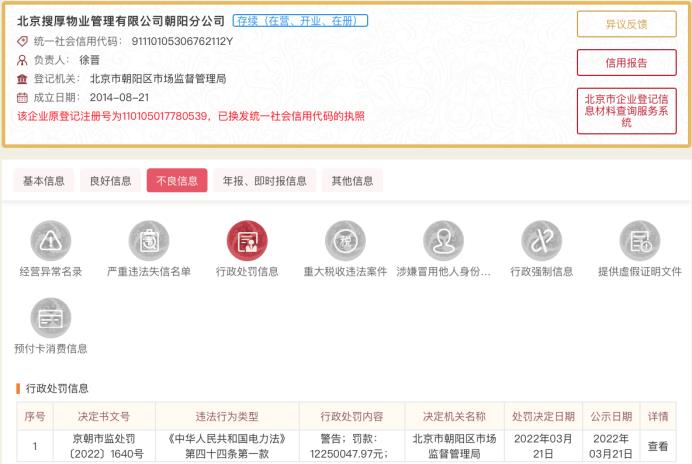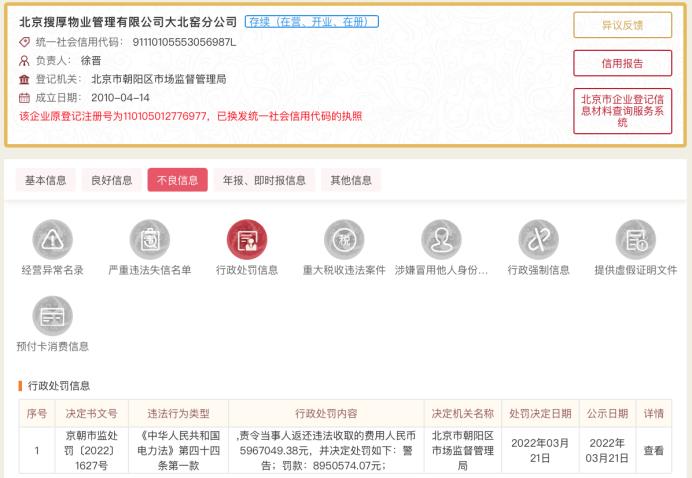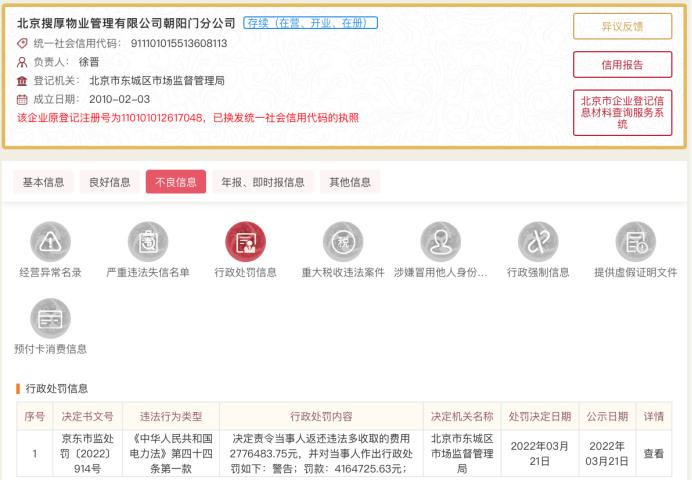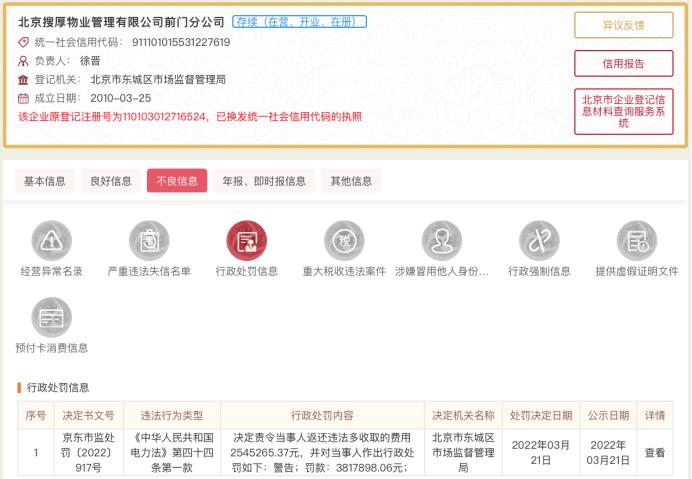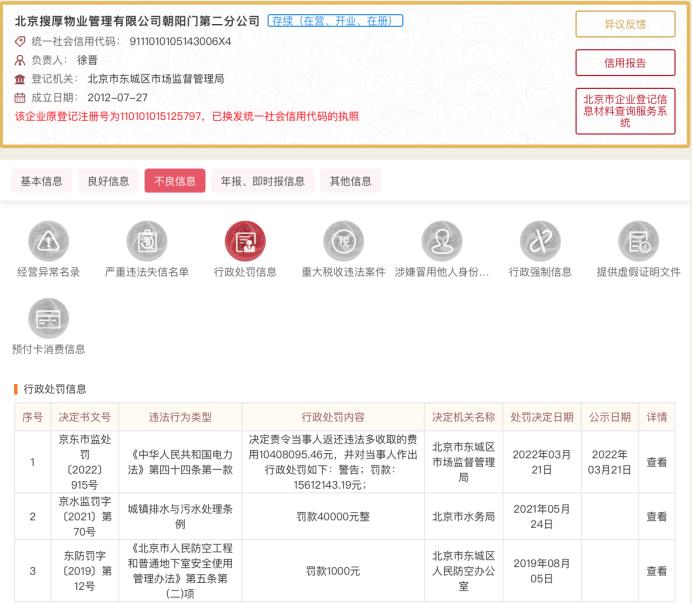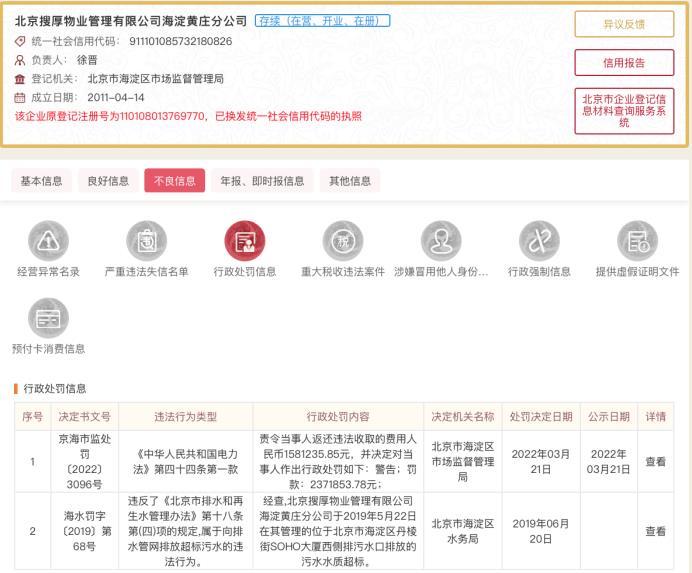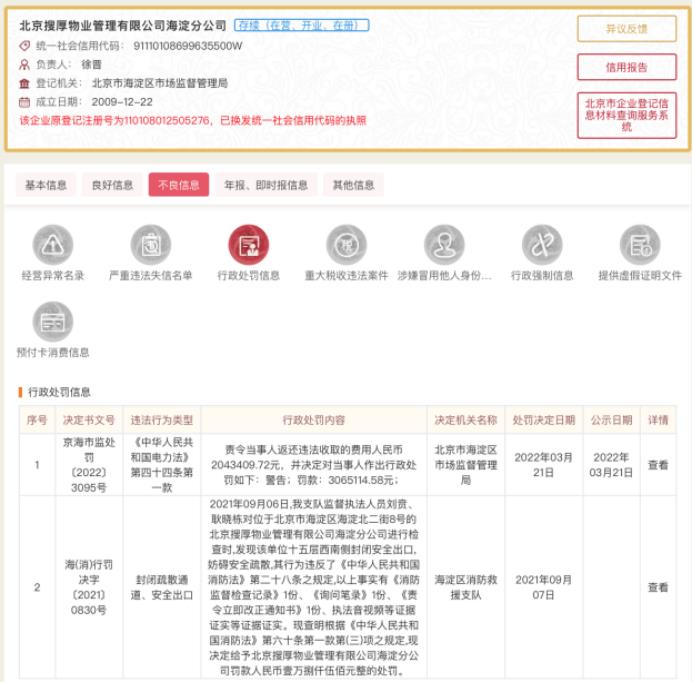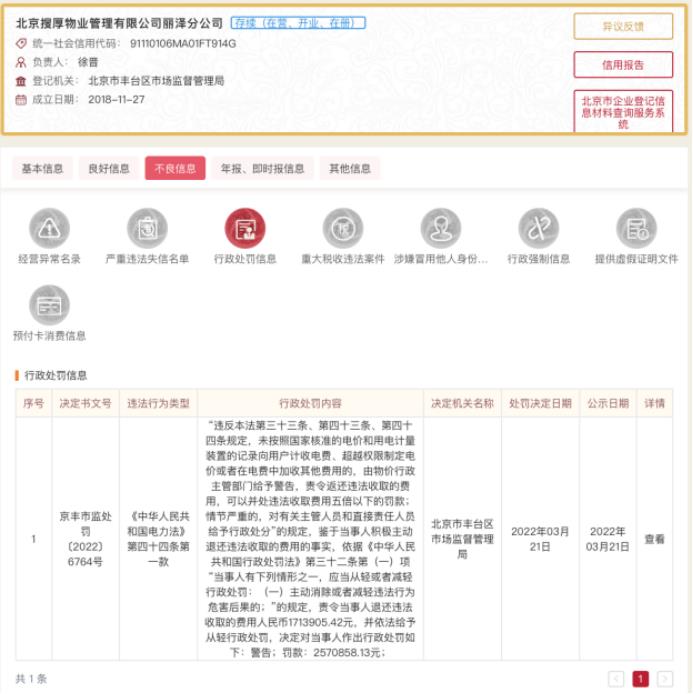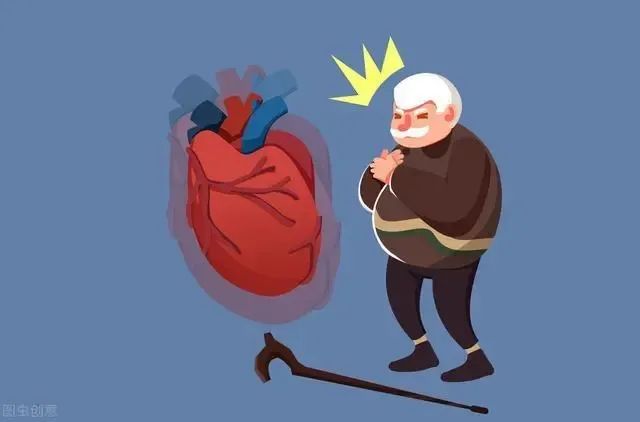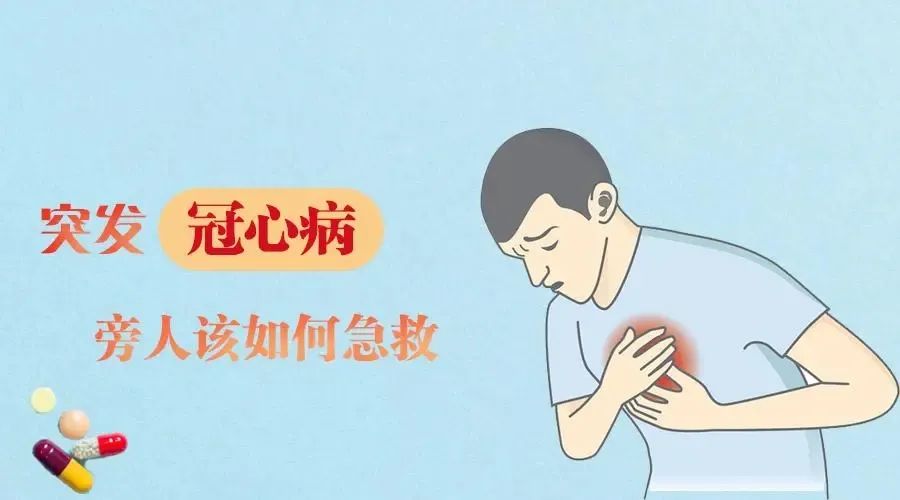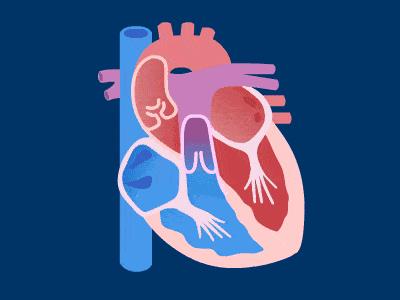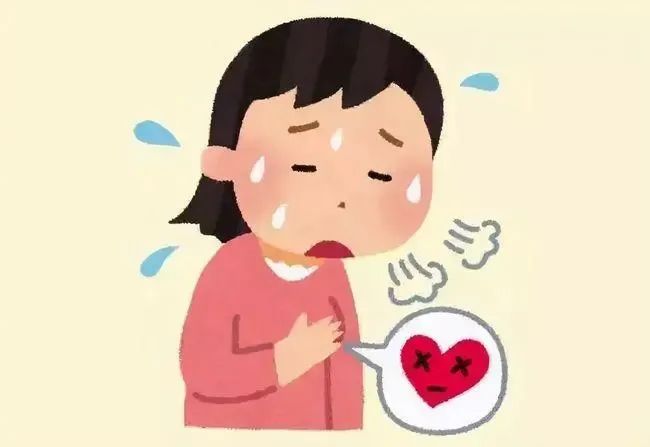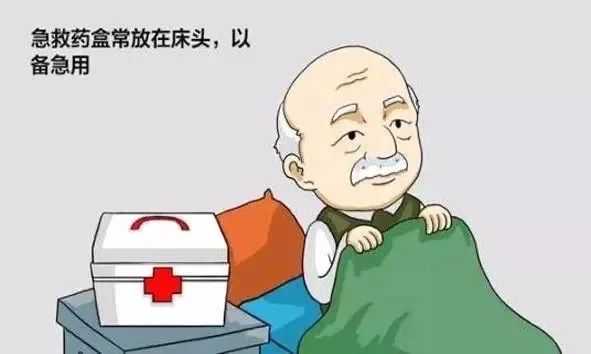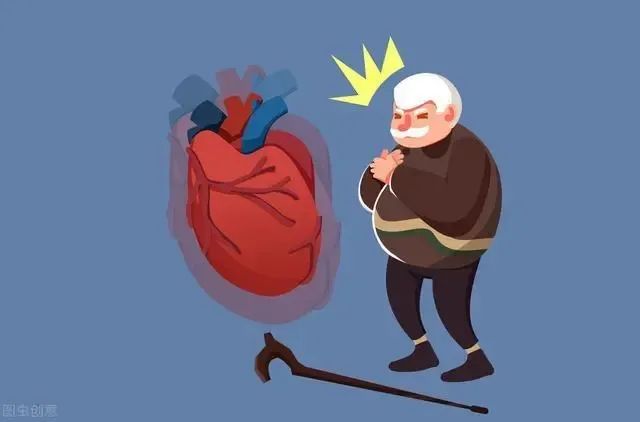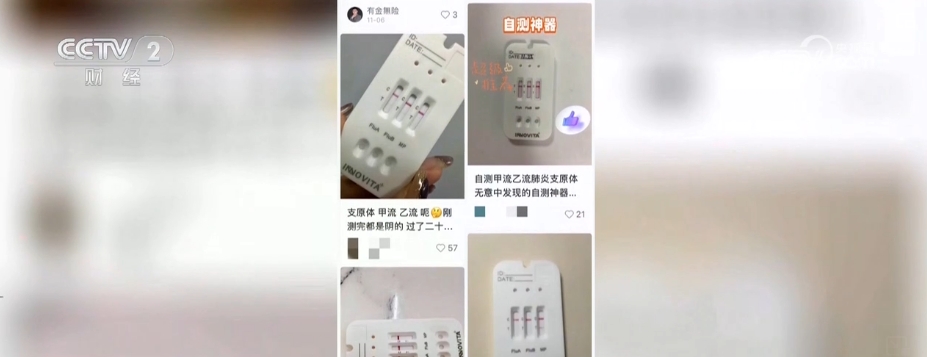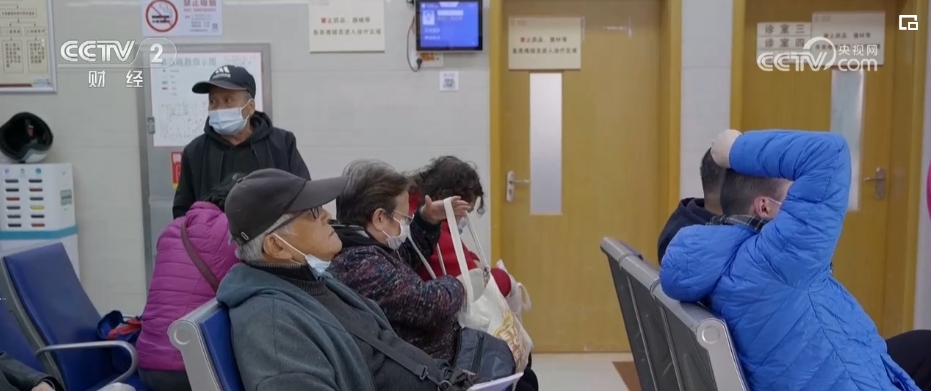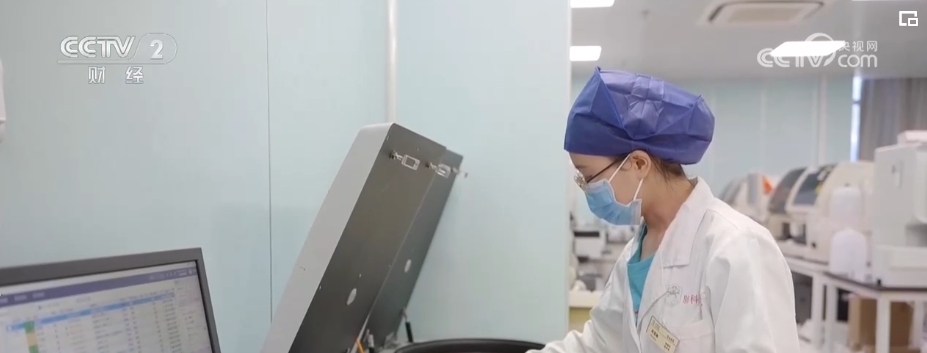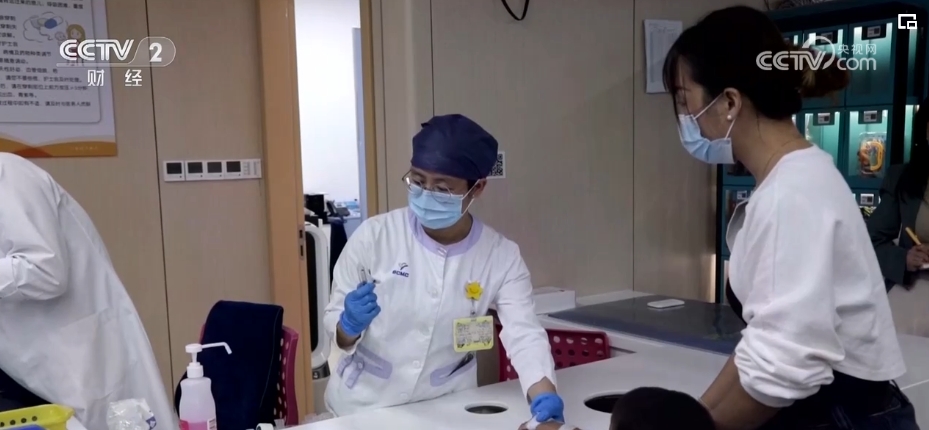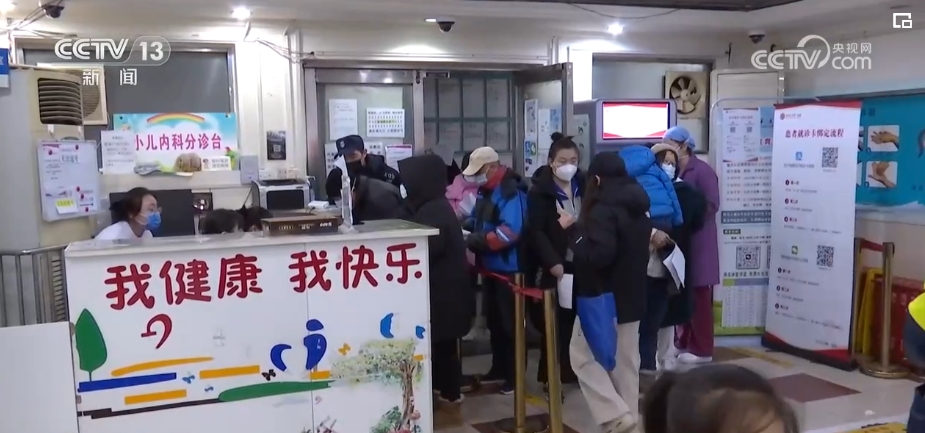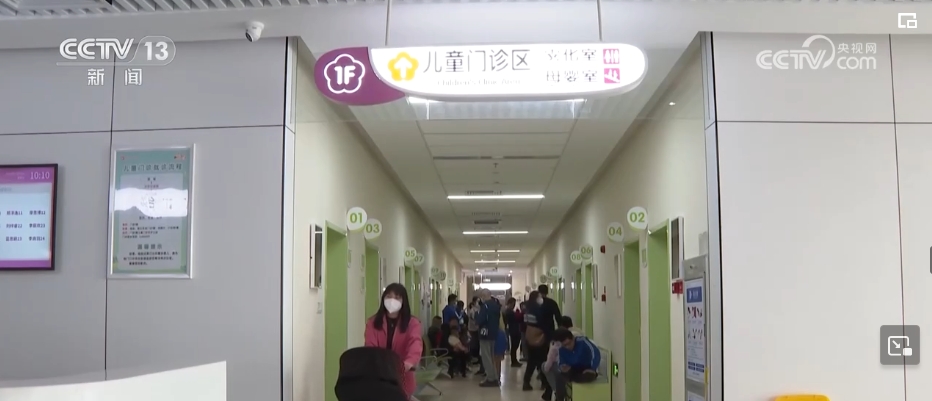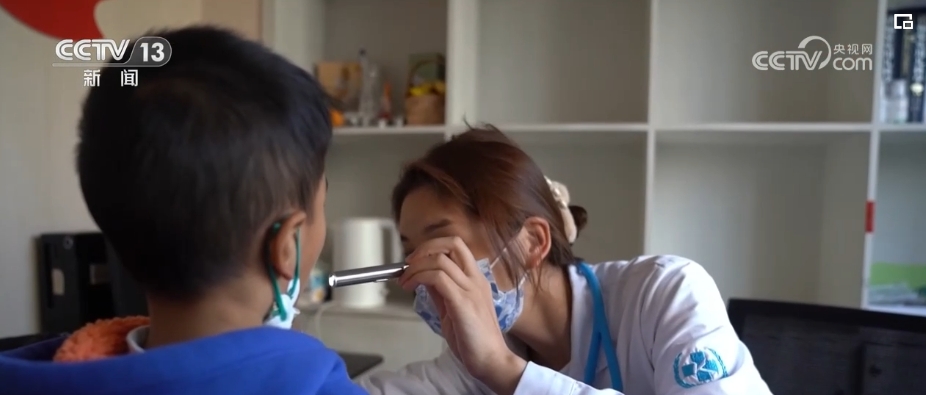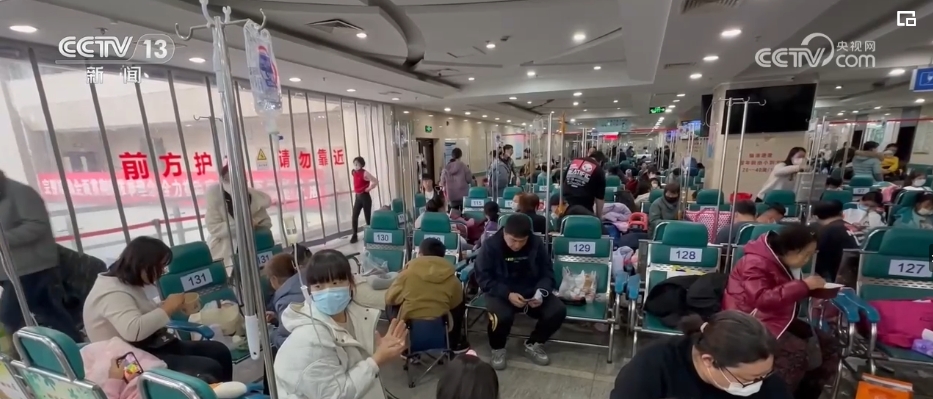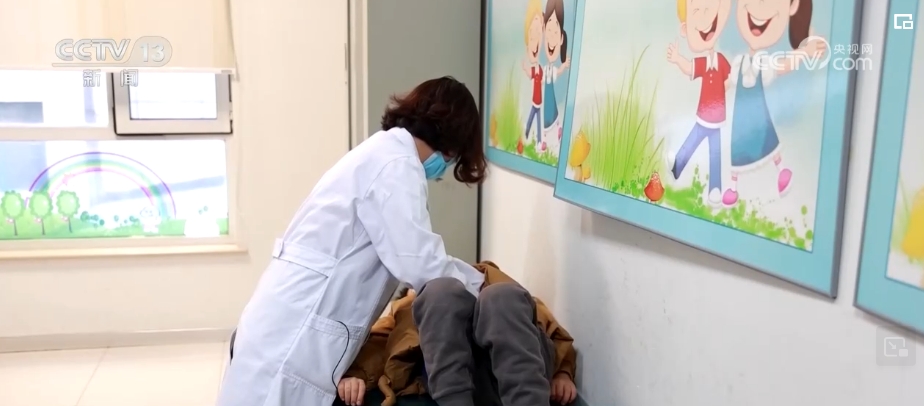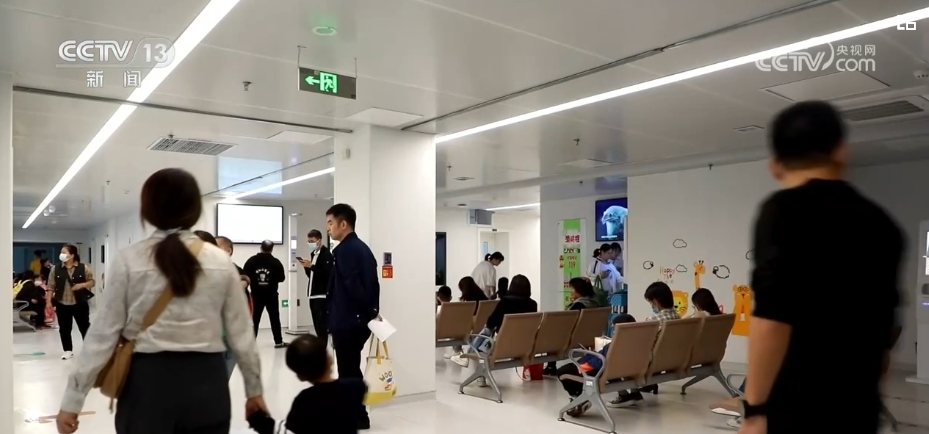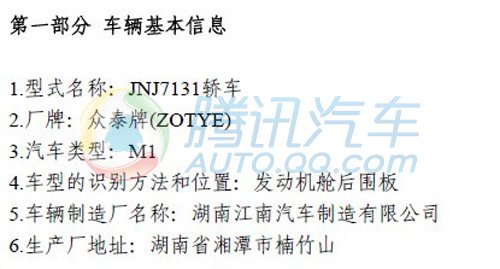The administrative offices of the Union, the Municipal People’s Government, the commissions, offices, departments and bureaus of the autonomous region, and major enterprises and institutions:
With the consent of the people’s government of the autonomous region, the Emergency Plan for Plague Control in Inner Mongolia Autonomous Region (2020 Edition) is hereby issued to you, please conscientiously implement it according to the actual situation.
June 28, 2020
(This piece is publicly released)
Emergency plan for plague control in Inner Mongolia Autonomous Region
(2020 edition)
1 general rule
1.1 Purpose of compilation
Effectively prevent, respond quickly, control the outbreak and epidemic of plague in time, eliminate the harm of plague in time, protect people’s health and life safety, and maintain social, political and economic stability.
1.2 Compilation basis
People’s Republic of China (PRC) Infectious Disease Prevention Law, People’s Republic of China (PRC) Emergency Response Law, Public Health Emergency Regulations, Domestic Traffic Health Quarantine Regulations, National Plague Control Emergency Plan, Inner Mongolia Autonomous Region Endemic Disease Prevention Regulations, Inner Mongolia Autonomous Region Emergency Measures for Public Health Emergencies, Inner Mongolia Autonomous Region Overall Emergency Plan for Public Health Emergencies, Inner Mongolia Autonomous Region Emergency Plan for Public Health Emergencies, Inner Mongolia Autonomous Region Medical and Health Rescue Plan for Public Emergencies and other relevant plans.
1.3 working principles
Taking people’s health as the center, adhere to the principles of prevention first, combining prevention with control, scientific response, prevention and control according to law, cooperation of government leaders and departments, territorial management, graded responsibility, social participation, mass prevention and control, rapid response and strong guarantee.
1.4 Scope of application
This plan is applicable to the emergency preparation and emergency disposal of plague epidemic in the administrative area of Inner Mongolia Autonomous Region.
1.5 Classification of plague epidemic situation
According to the location, disease type, number of cases, epidemic scope and trend, and the degree of harm to society, plague epidemics are divided into particularly serious plague epidemics (Grade I), major plague epidemics (Grade II), major plague epidemics (Grade III), general plague epidemics (Grade IV) and animal plague epidemics (Grade V).
1.5.1 particularly serious plague epidemic (Grade I)
One of the following circumstances is a particularly serious plague epidemic (level I):
(1) Pneumonic plague occurs in large and medium-sized cities and tends to spread;
(2) The associated pneumonic plague epidemic has spread to more than two provinces (autonomous regions and municipalities), and there is a trend of further spread;
(3) The loss of virulent strain of Yersinia pestis occurred.
1.5.2 Major plague epidemic (Grade II)
One of the following circumstances is a major plague epidemic (Grade II):
(1) cases of pneumonic plague occurred in Hohhot or the seat of Baotou municipal government, and there was a tendency to spread;
(2) More than 5 cases of pneumonic plague or septicemic plague occurred within an average incubation period (6 days, the same below) within the administrative area of a county (city, district);
(3) The associated pneumonic plague epidemic spread to more than two counties (cities, districts), and there is a trend of further spread;
(4) An epidemic of bubonic plague occurred in the administrative area of one county (city, district), and more than 20 cases occurred continuously in one average incubation period, or the epidemic scope spread to more than two allied cities.
1.5.3 Large plague epidemic (Grade III)
One of the following circumstances is a large plague epidemic (Grade III):
(1) The cases of pneumonic plague occurred in the seat of the municipal government of the Union except Hohhot and Baotou, and there was a tendency to spread;
(2) In the administrative area of a county (city, district), there are 1-4 cases of pneumonic plague or septicemia plague in an average incubation period;
(3) An epidemic of bubonic plague occurred in the administrative area of one flag county (city, district), with 10-19 consecutive cases within an average incubation period, or the epidemic scope spread to more than two flag counties (cities, districts).
1.5.4 General plague epidemic (Grade IV)
One of the following circumstances is the general plague epidemic (level IV):
(1) an animal plague epidemic occurred within 25km around the city where the Union municipal government is located;
(2) bubonic plague occurred in the administrative area of a county (city, district), and the number of cases in an average incubation period was 1-9.
1.5.5 Plague epidemic situation among animals (level V)
One of the following circumstances is the plague epidemic among animals (level V):
(1) Detection of Yersinia pestis from host animals or vector fleas;
(2) The nucleic acid in the host animal or vector flea is positive, and the antigen is positive at the same time;
(3) According to the provisions of the Criterion of Natural Plague Focuses and Animal Plague Epidemic (GB 16883—1997), the positive antibody was detected by indirect hemagglutination test, and reached the criterion of animal plague epidemic;
(4) Indirect hemagglutination test antibody positive serum was detected in unknown plague foci during the search of epidemic foci.
2 Organization and management
2.1 Organization
The people’s governments at all levels lead the plague prevention and control work in their respective administrative areas, and the principal responsible persons of the government should personally take the lead, shoulder their responsibilities, stick to their posts, and take effective measures to resolutely curb the spread of the epidemic. The relevant departments of the people’s governments at all levels shall be responsible for the work related to the prevention and control of plague and emergency response within the scope of their respective duties, and form a joint prevention and control work pattern.
2.1.1 plague emergency headquarters in the autonomous region.
In accordance with the responsibilities and the provisions of this plan, the people’s government of the autonomous region is responsible for organizing, leading, coordinating and directing the emergency response to the plague epidemic in the whole region. When a particularly serious plague epidemic occurred, the people’s government of the autonomous region established the plague emergency headquarters of the autonomous region according to the actual needs of emergency response work, with the vice-chairman of the people’s government of the autonomous region in charge of health and health work as the commander-in-chief of plague emergency headquarters of the autonomous region, and the deputy secretary-general of the people’s government of the autonomous region or the deputy director of the general office of the people’s government of the autonomous region and the director of the health and health commission of the autonomous region as the deputy commander-in-chief. The plague emergency headquarters Office of the Autonomous Region is located in the Health and Health Commission of the Autonomous Region. The director of the office is concurrently the deputy director of the Health and Health Commission of the Autonomous Region, and the members are the responsible persons of the member units. According to the actual situation, the commander-in-chief, deputy commander-in-chief and member units of plague emergency headquarters in the autonomous region can be adjusted. When necessary, the headquarters can be centralized.
The members of the headquarters include: the Propaganda Department of the Party Committee of the Autonomous Region, the Internet Information Office, the Foreign Affairs Office, the General Office of the People’s Government of the Autonomous Region, the Health and Wellness Commission, the Development and Reform Commission, the Education Department, the Science and Technology Department, the Public Security Department, the Finance Department, the Civil Affairs Department, the Ecological Environment Department, the Transportation Department, the Industry and Information Technology Department, the Agriculture and Animal Husbandry Department, the Commerce Department, the Culture and Tourism Department, the Emergency Management Department, the Market Supervision Bureau, the Forestry and Grass Bureau, the Medical Insurance Bureau,
2.1.2 Union City and counties (cities, districts) plague emergency headquarters.
It is composed of the people’s government at the corresponding level and relevant departments, with the main leaders of the people’s government at the corresponding level as the chief commander, and the leaders of the government in charge of health, forestry, public security, transportation and other work as the deputy chief commander. The member units of the headquarters refer to the members of plague emergency headquarters in the autonomous region.
2.2 Division of responsibilities
2.2.1 responsibilities of plague emergency headquarters in the autonomous region.
Responsible for the unified leadership and unified command of emergency response to particularly serious and major plague epidemics, make major decisions on handling plague epidemics, implement prevention and control funds and coordinate material support, and formulate epidemic prevention and control strategies in accordance with national requirements; Determine designated medical and health institutions, set up various prevention and control expert groups at the autonomous region level, and provide technical support for prevention and control work; To carry out supervision and inspection of prevention and control work; Responsible for the release of plague epidemic information in the whole region.
The division of responsibilities of each member unit is as follows:
The Propaganda Department of the Party Committee of the Autonomous Region and the Information Office: In accordance with the unified deployment of plague epidemic control, do a good job in publicity and reporting on epidemic disposal, correctly guide public opinion, strengthen supervision and guidance on online information release, and investigate and deal with illegal information according to law. Actively carry out the propaganda and popularization of plague prevention knowledge, and raise public awareness of epidemic prevention and health care.
The Foreign Affairs Office of the Party Committee of the Autonomous Region: Assist the functional departments to do a good job in foreign-related affairs related to plague emergency response, help solve the concerns of overseas media and other institutions on the epidemic situation, and assist in receiving the inspection of international organizations.
General Office of the People’s Government of the Autonomous Region: convey the requirements of the leaders of the People’s Government of the Autonomous Region on the disposal of plague epidemic, and coordinate relevant departments to do relevant work.
Autonomous Region Health and Wellness Committee: responsible for organizing the formulation of plague prevention and control technical plans, organizing the implementation of plague emergency medical treatment and various prevention and control measures, and inspecting and supervising related work; Responsible for the technical guidance of sanitary treatment in epidemic areas and make a comprehensive assessment of the epidemic situation; According to the needs of plague prevention and control work, put forward suggestions on isolating and blocking plague epidemic areas according to law; Publish information on plague epidemic situation according to law; Organize patriotic health campaigns and health education.
Autonomous Region Development and Reform Commission: cooperate with the Autonomous Region Health and Wellness Commission to formulate the development plan for plague control; Support and cooperate with relevant departments to provide drugs and equipment for emergency epidemic treatment to epidemic areas, and timely organize the transportation of materials necessary for people’s production and life in epidemic areas.
Education Department of the Autonomous Region: To publicize and educate students and teaching staff about plague prevention and control.
Science and Technology Department of the Autonomous Region: Strengthen the construction of scientific and technological innovation platform for plague prevention and control, and increase support for key technologies for plague prevention and control.
Public security department of the autonomous region: assist in sealing off plague epidemic areas and strengthen public security management and security work in epidemic areas.
Autonomous Region Department of Finance: Make arrangements for plague prevention and control and emergency funds and timely allocate them, and strengthen fund management and supervision.
Civil Affairs Department of the Autonomous Region: Provide basic living assistance to plague patients who meet the conditions for assistance.
Department of Industry and Information Technology of the Autonomous Region: Cooperate with the Health and Health Commission of the Autonomous Region and the Food and Material Reserve Bureau to organize qualified industrial enterprises in the autonomous region to produce medicines, medical devices, protective and disinfection supplies and other materials needed for epidemic prevention. When the production capacity in the autonomous region cannot meet the demand, timely coordinate the enterprises with production capacity to build or change production, and ensure the material reserves in the whole region and the material needs necessary for the production and life of the people in the affected areas; Cooperate with Inner Mongolia Communication Administration to ensure communication.
Agriculture and Animal Husbandry Department of the Autonomous Region: responsible for animal plague epidemic prevention and animal epidemic prevention supervision of livestock in plague-stricken areas, taking rodent control measures in agricultural areas to reduce rodent density.
Department of Commerce of the Autonomous Region: responsible for the emergency supply of important daily necessities in epidemic areas.
Department of Culture and Tourism of the Autonomous Region: Organize the whole tourism industry to do a good job in the prevention and emergency response of plague epidemic; Do a good job in the publicity and education of the basic knowledge of plague prevention and control in tourism professionals, especially in grassland tourism professionals and tourists, actively publicize and popularize the "three noes and three reports" of plague prevention and control, and effectively improve the self-prevention awareness and ability of the above people.
The Department of Transportation of the Autonomous Region, China Railway Hohhot Bureau Group Co., Ltd. and Civil Aviation Inner Mongolia Safety Supervision Bureau are responsible for the traffic health and quarantine work within their respective responsibilities in accordance with the Domestic Traffic Health and Quarantine Regulations and its implementation methods, and give priority to the transportation of plague epidemic handlers, medical equipment and related materials.
Hohhot Customs and Manzhouli Customs: When frontier health and quarantine is involved, it shall be handled in accordance with the provisions of the Frontier Health and Quarantine Law of People’s Republic of China (PRC) and its implementing rules; Strengthen port health quarantine. When there is a human plague epidemic, it is necessary to carry out port temperature monitoring and medical inspection, and do a good job in epidemic report, environmental disinfection and health education.
Autonomous Region Market Supervision Bureau: Strengthen market supervision and severely punish units and individuals that illegally purchase, sell and process plague host wild animals and their products in bazaars; Guide the market promoters and relevant animal products operators in the market to do a good job in self-discipline management.
Forestry and Grass Bureau of the Autonomous Region: responsible for monitoring the abnormal situation of terrestrial wild animals in epidemic areas, and assisting in the isolation of the epidemic areas when the plague epidemic occurs; Take rodent control measures in grassland areas to reduce the density of rodents.
Autonomous Region Medical Insurance Bureau: formulate policies, plans, standards and organize the implementation of medical insurance and medical assistance for plague epidemic prevention and control.
Security Bureau of Inner Mongolia Military Region and Inner Mongolia Armed Police Corps: Complete the task of handling the plague epidemic in the camp, and assist and support the local authorities to do a good job in epidemic control.
Aiwei Association of the Autonomous Region: responsible for carrying out protective rodent and flea control in cities, mobilizing the masses to carry out extensive actions of cleaning homes and environmental sanitation, strengthening the control of vectors, and doing a good job in urban and rural garbage management and toilet and sewage treatment.
Autonomous Region Red Cross Society: According to the needs of plague prevention and control emergency work, special fund-raising and humanitarian relief activities can be carried out; Give full play to the role of volunteers, assist relevant departments to carry out extensive publicity and popularization of plague prevention knowledge in enterprises, communities, villages and schools, and raise public awareness of self-protection.
Other relevant departments shall, according to the responsibilities of their own departments and the needs of plague emergency treatment, organize and do a good job in emergency material reserve, market supervision, pollution diffusion control and related work assigned by plague emergency headquarters in the autonomous region.
2.2.2 Duties of the plague emergency headquarters in Union City and counties (cities, districts).
Responsible for the coordination and command of the emergency treatment of plague epidemic in this administrative area, make decisions on the treatment of plague epidemic in this administrative area, and decide on major measures to be taken. The relevant departments refer to the responsibilities of the member units of plague emergency headquarters in the autonomous region, and do a good job in the emergency work of plague prevention and control.
2.2.3 Responsibilities of health administrative departments at all levels
Strengthen coordination and cooperation with relevant departments, establish inter-departmental information communication and fixed liaison system, communicate and negotiate with relevant departments in a timely manner, and form a joint prevention and control mechanism involving multiple departments.
The responsibilities of the Health and Wellness Committee of the Autonomous Region shall be implemented in accordance with the relevant provisions of 2.2.1.
The administrative department of health of each Union city and counties (cities, districts) is responsible for directing, coordinating and managing the prevention and control of plague within their respective administrative areas; Formulate the plague emergency plan according to the local conditions; Implement prevention and control funds and organize emergency response to plague epidemic; Organize plague emergency training, drills and emergency prevention and control material reserves; Responsible for determining the designated medical institutions and doing a good job in the treatment of patients; Carry out supervision and inspection and health education; Organize patriotic health campaigns, etc.
2.2.4 Responsibilities of disease prevention and control institutions at all levels (professional institutions for plague prevention and control)
Responsible for the monitoring of plague epidemic situation, do a good job in collecting, reporting and analyzing epidemic information, and provide a basis for early warning. Do a good job in the monitoring of animal plague, and promptly give early warning after discovering the epidemic situation among animals, and deal with the epidemic spots in time; When a human epidemic occurs, formulate an epidemiological investigation plan and a technical plan for epidemic control; Carry out follow-up investigation on plague patients, suspected patients and their close contacts; Investigate and analyze the incidence and distribution characteristics of the population; Find out the source and route of infection, and put forward and implement targeted prevention and control measures; Timely report the situation to the health administrative department at the same level and the disease prevention and control institutions at higher levels (professional institutions for plague prevention and control). Conduct laboratory tests on plague samples and report the laboratory test results according to procedures.
The comprehensive disease prevention and control center of the autonomous region is responsible for the final re-judgment of Yersinia pestis in the whole region and the review of the laboratory test results of human plague cases.
2.2.5 Responsibilities of various medical and health institutions at all levels
Responsible for the monitoring, discovery and reporting of human plague, carry out specimen collection, cooperate with disease prevention and control institutions to carry out epidemiological investigation, be responsible for the training of medical staff in this institution, and do a good job in the prevention and control of nosocomial infection.
Grass-roots medical and health institutions should strengthen screening, reporting, isolation and registration of plague patients, and may not stay or refuse to consult without permission.
Designated medical institutions are responsible for the centralized treatment of plague in this area; Do a good job in the training of medical staff in this institution on diagnosis and treatment, disinfection and isolation, personal protection and other knowledge, and strictly implement the workflow; Do a good job in ensuring the personnel, medicines, facilities, equipment and protective equipment needed for medical treatment; Implement measures such as disinfection, hospital infection management and personal protection; Do a good job in hospital infection monitoring, and report and dispose of it in time; Do a good job in medical waste management and disposal; Do a good job in biosafety management and quality control of clinical laboratories.
2.2.6 Responsibilities of health supervision institutions at all levels
Responsible for the supervision and inspection of plague prevention and control work carried out by medical and health institutions in this area.
2.2.7 Duties of Hohhot Customs and Manzhouli Customs
In accordance with the relevant provisions of 2.2.1.
2.3 plague expert advisory group
2.3.1 Composition of plague expert advisory group
When a human epidemic occurs and emergency response of Grade I, II, III and IV is started, a plague expert advisory group shall be established. Relevant experts from the Center for Comprehensive Disease Control and Prevention of the Autonomous Region served as the head of the plague expert advisory group of the autonomous region. Members are composed of relevant experts such as the Center for Comprehensive Disease Prevention and Control of the Autonomous Region, Agriculture and Animal Husbandry Department, Forestry and Grass Bureau, Aiweihui Office, Inner Mongolia People’s Hospital, Inner Mongolia Fourth Hospital, Affiliated Hospital of Inner Mongolia Medical University and universities. When an animal plague epidemic occurs, decide whether to set up an expert group according to the situation.
2.3.2 Responsibilities of plague expert advisory group
According to the epidemic situation, the expert group put forward opinions and suggestions on plague prevention, control and emergency response to emergency headquarters, providing a basis for the decision-making and deployment of the headquarters.
3 Monitoring and early warning
3.1 Plague monitoring
The Health and Wellness Committee of the Autonomous Region shall, in accordance with the unified regulations and requirements of the whole country and in combination with the actual situation in our region, organize the active monitoring of plague, strengthen the management and supervision of plague monitoring, and ensure the monitoring quality.
The Union Municipal Health and Health Committees shall organize and guide counties (cities, districts) to carry out active plague monitoring in accordance with the unified regulations and requirements of the autonomous region and the actual situation in the region, and strengthen the management and supervision of plague monitoring to ensure the monitoring quality.
3.1.1 Monitoring system
Establish a three-level plague monitoring system in autonomous regions, union cities and counties (cities, districts). According to the requirements of the National Plague Monitoring Program, the Center for Comprehensive Disease Prevention and Control of the Autonomous Region has formulated the Plague Monitoring Program for the whole region. The plague foci and monitoring areas shall carry out the daily monitoring of plague according to the requirements of the plague monitoring plan of the whole region. In areas with national plague monitoring points, the daily monitoring of plague shall be carried out in accordance with the requirements of the National Plague Monitoring Program.
3.1.2 Monitoring funds guarantee
The people’s government of the autonomous region is responsible for the necessary funds for the monitoring of plague epidemic; The Union Administrative Office, the Municipal People’s Government, and the people’s governments of counties (cities, districts) are responsible for monitoring the daily operating expenses.
3.2 Plague Warning Release
Health administrative departments at all levels shall timely release and release early warning information according to the harmfulness and urgency of plague epidemic reported by monitoring points. Early warning information includes: plague classification, early warning level, warning events, measures to be taken, starting time and issuing authority, etc.
3.2.1 Early warning issuing unit
According to the requirements of the national and autonomous region plague control emergency plan, health administrative departments at all levels shall timely release and adjust the early warning information according to the classification of plague epidemic warning. Level I early warning: National Health and Wellness Commission; Level II early warning: Autonomous Region Health and Wellness Committee; Level III early warning: Union Municipal Health and Health Commission; Level IV early warning: Qixian (city, district) Health and Wellness Committee.
3.2.2 Early warning classification
I-level early warning: I-level early warning will be started when a particularly serious plague epidemic (I-level) or a major plague epidemic (II-level) occurs.
Level II early warning: Level II early warning will be started when a large plague epidemic (level III) occurs.
Level III early warning: Level III early warning will be started in case of general plague epidemic (level IV).
Ⅳ early warning: In case of animal plague epidemic (Ⅴ), the Ⅳ early warning will be started.
3.2.3 Publishing objects
Level I early warning: The release target is determined by the National Health and Wellness Commission.
Level II early warning:
(1) released to the people’s governments and health administrative departments of 12 league cities and 103 counties (cities, districts) in the whole region;
(2) released to the member units of plague emergency headquarters in the autonomous region;
(3) according to the affiliation and management authority to the autonomous region at all levels and all kinds of medical and health institutions;
(4) released to the provincial defense organizations and the health administrative departments of neighboring provinces (see Annex);
(5) release to the public;
(6) at the same time submitted to the National Health and Wellness Commission and the people’s government of the autonomous region.
Level III early warning:
(1) released to the people’s governments and health administrative departments of counties (cities, districts) under the jurisdiction of the Union City where the epidemic occurred;
(2) released to the member units of emergency headquarters Plague in Union City;
(3) according to the affiliation and management authority, release it to all kinds of medical and health institutions at all levels within the jurisdiction of the Union City where the epidemic occurred;
(4) release it to the joint defense organizations between the cities of the Union and the health administrative departments in the adjacent areas;
(5) release to the public;
(6) At the same time, it shall be submitted to the Health and Wellness Commission of the autonomous region and the people’s government at the corresponding level.
Ⅳ warning:
(1) to all kinds of medical and health institutions at all levels where the epidemic occurred;
(2) to the counties (cities, districts) between defense organizations or the health administrative departments in the adjacent areas;
(3) release to relevant departments and the public;
(4) At the same time, submit it to the health administrative department of the Union City and the people’s government at the same level.
3.2.4 Release time
After determining the epidemic situation and grading, early warning information should be released in time, and the longest time should not exceed 24 hours. The early warning time lasts until the end of the epidemic year, and it is decided whether to continue to the next year according to the epidemic situation.
3.2.5 Release Form
According to the release target, you can choose documents, conferences, official website, all kinds of mainstream media, announcements and other ways to release early warning information.
4 epidemic discovery, diagnosis and report
4.1 Information management
4.1.1 Improve the information management system for plague prevention and control in the whole region, build an information network covering disease prevention and control institutions or specialized agencies for plague prevention and control in autonomous regions, union cities and counties (cities, districts), and undertake the collection, processing, analysis and reporting of information related to plague epidemic.
4.1.2 Health administrative departments at all levels are responsible for the organization, implementation, management and platform construction of plague prevention and control management information work within their respective jurisdictions, constantly improving the plague prevention and control information management system within their respective jurisdictions, and providing necessary guarantee conditions for the normal operation of the system.
4.1.3 All kinds of medical and health personnel at all levels who perform their duties are responsible reporters of human plague epidemic.
4.1.4 Disease prevention and control institutions at all levels or plague prevention and control institutions shall be responsible for the monitoring, information reporting and management of plague epidemic within the scope of their responsibilities, and shall be responsible for collecting, analyzing and verifying epidemic information and other relevant information within their respective jurisdictions. Disease prevention and control institutions at all levels and specialized agencies for plague prevention and control are responsible reporting units for direct network reporting.
4.2 Discovery, diagnosis and reporting of human cases
4.2.1 Discovery of cases
If you have been to the above-mentioned areas in the plague-affected areas, historical epidemic areas or suspected plague-affected areas or within 10 days, you should pay attention to asking whether you have been to the plague-affected areas before the onset, whether you have been in contact with dead rats or other wild animals, and whether you have eaten rabbits and marmots. All patients with unknown diagnosis and one of the following symptoms are reported as suspected plague patients:
(1) Patients with high fever and unconsciousness;
(2) Patients with lymph node enlargement and severe pain and high fever without trauma infection;
(3) Patients with high fever accompanied by cough, chest pain and hemoptysis;
(4) Patients with high fever and skin blisters or ulcers.
4.2.1.1 has been to the above areas in plague epidemic areas, historical epidemic areas, suspected plague epidemic areas or within 10 days. Those who have a very short course of disease and die sharply should be reported as patients with sudden death.
4.2.1.2 medical institutions are responsible for collecting relevant clinical samples of cases, and sending the samples to local disease prevention and control institutions (specialized institutions for plague prevention and control) for relevant testing as soon as possible according to biosafety requirements.
4.2.2 Case confirmation
The laboratory test results of all plague cases need to be rechecked by the Center for Comprehensive Disease Prevention and Control of the autonomous region, and evaluated and confirmed by the expert group according to the clinical manifestations, epidemiological history and laboratory test results.
4.2.3 Case report
All kinds of medical institutions at all levels shall immediately report suspected cases of plague to local disease prevention and control institutions and health administrative departments. After receiving the report, the local disease prevention and control institutions should immediately investigate and verify. After judging the epidemic situation of human plague, they should report directly to the network within 2 hours according to the prescribed time limit. At the same time, after receiving the report, the local health administrative department should immediately report to the local people’s government and report to the health administrative department and the people’s government at the next higher level step by step until reporting to the National Health and Wellness Commission.
4.3 Confirmation and report of animal plague epidemic situation
4.3.1 The Center for Comprehensive Disease Control and Prevention of the Autonomous Region undertakes the re-judgment and identification of plague strains, and may authorize the Center for Disease Control and Prevention of the League City (a professional organization for plague prevention and control) to undertake the re-judgment of nucleic acid positive samples and serum positive samples within its jurisdiction.
4.3.2 Report of animal epidemic situation
After the occurrence of animal plague is monitored at the monitoring point, it shall be immediately reported to the disease prevention and control institutions in counties (cities, districts). Counties (cities, districts) disease prevention and control institutions shall immediately verify after receiving the report. After judging the occurrence of animal plague epidemic, the responsible reporting unit shall report directly to the network within 6 hours in towns and towns, and within 12 hours in Sumu Township and Gacha Village. After receiving the report, the health administrative department of counties (cities, districts) shall immediately report to the local people’s government and report to the health administrative department at the next higher level.
5 emergency treatment
When an epidemic of human or animal plague occurs, the governments of counties (cities, districts), league cities and autonomous regions and their relevant departments at the place where the epidemic occurs shall make corresponding emergency response according to the principle of graded response. At the same time, according to the development trend of plague epidemic and the needs of prevention and control work, the response level should be adjusted in time to effectively control the plague epidemic and reduce the harm, and maintain the normal production and living order.
5.1 Measures to be taken for emergency treatment of animal plague epidemic (Grade V)
5.1.1 Start the emergency response to public health emergencies. After the Qixian (city, district) Health and Health Committee or the Union City Health and Health Committee organizes relevant experts to confirm, the Qixian (city, district) Health and Health Committee shall report to the Qixian (city, district) people’s government, and the Qixian (city, district) people’s government shall start an emergency response according to the animal plague epidemic (level V) and issue a level IV early warning at the same time.
5.1.2 Timely and standardized epidemic treatment. In principle, according to the type and epidemic intensity of plague epidemic among animals, the distance from towns, residential areas, traffic arteries, important areas, tourist attractions, etc., and the ecological characteristics of host animals, the treatment scope is determined according to local conditions, and rodent control and flea control are carried out quickly according to requirements, so as to achieve the standards of no rats, no holes and no fleas.
5.1.3 Strengthen the monitoring of plague among animals. We will continue to expand the scope of search with the epidemic as the center, carry out various laboratory tests in accordance with the laboratory biosafety regulations, and "check all the materials obtained" to improve the quality and skills of laboratory inspectors and improve the inspection quality.
5.1.4 Carry out rodent and flea control. Forestry and grass, agriculture and animal husbandry departments and patriotic health institutions should organize the protective rodent and flea control work in grasslands, agricultural areas and cities. Give full play to the advantages of mass prevention and control, mobilize grassland, land contractors, urban and rural residents and other people to actively participate, combine special groups, expand the scope of rodent control and flea control, increase the frequency and depth, and achieve full coverage without dead ends. At the same time, do a good job in the investigation of rat density and rodent damage before and after deratization, so as to provide a basis for scientific deratization and effect evaluation. All field construction sites, industrial and mining enterprises, tourist attractions and military areas within the scope of the epidemic focus should do a good job of rodent control and flea control in the scope of responsibility and surrounding areas under the guidance of relevant business.
5.1.5 Carry out plague epidemic risk assessment. According to the epidemic characteristics, occurrence areas and development trends, carry out the risk assessment of human plague epidemic in this area. Pay close attention to the dynamics of plague epidemic, focus on large-scale field construction projects in the epidemic focus, and put forward corresponding prevention and control measures.
5.1.6 Publicity and education and risk communication. Strengthen the publicity and education of plague prevention and control knowledge, and publicize the "three noes and three reports" through various channels and forms. Plague focus and its adjacent areas should focus on strengthening health behavior intervention for farmers and herdsmen, field workers, tourists and other groups, and effectively improve the people’s awareness and ability of self-prevention. Actively carry out public opinion monitoring, popularize the knowledge of epidemic prevention and control, solve doubts and doubts to the public in time, respond to social concerns, and do a good job in communication of epidemic prevention and control risks. It is necessary to strengthen health education and risk communication in key groups, key places and large-scale crowd gathering activities.
5.1.7 Strengthen the training of medical and health personnel. The health administrative departments of counties (cities, districts) should organize all kinds of medical and health institutions at all levels within their jurisdiction to carry out training on knowledge related to plague prevention and treatment, focusing on the knowledge of human plague identification, diagnosis and treatment, epidemic situation report, emergency plan implementation, hospital infection control, etc., so as to improve medical staff’s awareness of plague prevention and treatment, implement the responsibility system for first-visit doctors, and achieve early detection, early diagnosis, early reporting, early isolation, early treatment and on-site treatment.
5.1.8 Strengthen the pre-inspection and triage and the investigation of fever patients. All kinds of medical and health institutions at all levels should strengthen the management of pre-inspection and triage, establish a responsibility system for the investigation and reporting of plague patients, strictly implement the process of receiving and screening fever patients, and conscientiously implement the registration and reporting system for fever patients. Grass-roots medical and health institutions should strengthen the screening of patients with fever. If patients with fever of unknown reasons are found, they should take local isolation measures, register and report the patient information well, and it is strictly forbidden to stay in the clinic or refuse to consult without permission.
5.1.9 Emergency response in adjacent areas. The health administrative department in the area where the plague epidemic occurred should inform the health administrative department in the adjacent area of the epidemic situation and the measures taken in a timely manner. In areas adjacent to the plague epidemic, the risk assessment of human and animal plague epidemic in this area should be carried out according to the epidemic characteristics, occurrence area and development trend, and the possibility and degree of being affected in this area should be actively analyzed, and corresponding prevention and control measures should be taken.
5.2 Measures to be taken for emergency treatment of general plague epidemic (Grade IV)
5.2.1 Start the emergency response to public health emergencies. The counties (cities, districts) Health and Health Committee or the League Health and Health Committee shall organize relevant experts to confirm and report to the people’s government at the same level. The counties (cities, districts) people’s government shall start emergency response according to the general epidemic situation (level IV), and the League Health and Health Committee shall issue a level III warning. Counties (cities, districts) set up an epidemic prevention and control headquarters with the main leaders of the government as the chief commander, fully fulfilling the main responsibility of the territory, and at the same time starting the "three reports" system of zero epidemic report, daily report of illness and daily report of work progress.
5.2.2 Make every effort to treat patients. Adhere to the principle of "nearby, local treatment", "centralized patients, experts, resources and treatment", transfer patients to designated medical institutions at the county level with negative pressure ambulances, and carry out treatment according to the plague diagnosis and treatment plan, so as to improve the admission rate and reduce the mortality rate.
5.2.3 Strengthen the prevention and control of hospital infection. Medical institutions should strengthen isolation, disinfection and protection, and fully implement various measures to prevent nosocomial infection. Standardize the pre-inspection and triage, and do a good job in the hospital sense control of fever clinics, emergency departments and all other general wards (wards). Plague cases (including suspected cases and confirmed cases) and mild cases among infected people shall be treated in isolation, and suspected cases shall be treated in isolation in a single room. Medical institutions shall, in strict accordance with the Technical Specification for Disinfection of Medical Institutions, do a good job in cleaning and disinfecting medical devices, contaminated items, surfaces and floors; Carry out air disinfection according to the requirements of "Hospital Air Purification Management Standard". Medical waste generated in the process of diagnosis and treatment of plague patients should be disposed of and managed according to the relevant provisions of the Regulations on the Administration of Medical Waste and the Measures for the Administration of Medical Waste in Medical and Health Institutions.
5.2.4 Timely carry out the treatment of epidemic areas. In strict accordance with the "standards and principles for the treatment of human plague epidemic areas" (GB15978—1995), the epidemic areas were treated. In principle, take the residence of plague patients, suspected patients or plague corpses as the center, and delimit the surrounding areas that may be polluted as isolation circles, such as a courtyard and a house. Pastoral areas can divide a tent or several connected tents into isolation circles. When a patient (or corpse) occurs in an urban community, one of the buildings or an independent unit where the patient (or corpse) is located can be designated as an isolation circle. After the patient is transported, the disinfection and disposal of the isolation circle should be carried out, and the disease prevention and control institutions at higher levels should give guidance.
5.2.5 Rapid epidemiological investigation. When the disease prevention and control institutions in counties (cities, districts) receive reports of suspected cases and confirmed cases of plague from medical institutions or medical personnel, they shall complete the epidemiological investigation within 24 hours in accordance with the Plague Case Questionnaire, do a good job in judging and registering close contacts, and submit the epidemiological investigation and analysis report to the health administrative department at the same level and the disease prevention and control institutions in the Union City (professional institutions for plague prevention and control); Carry out a retrospective investigation of the source of infection.
5.2.6 Tracking and management of close contacts. By the counties (cities, districts) health administrative departments in conjunction with relevant departments to organize the implementation. Close contacts of suspected cases and confirmed cases shall be subject to centralized or isolated medical observation at home, and their body temperature shall be measured at least twice a day, and whether there are other related symptoms such as fever, cough, hemoptysis, lymphadenopathy and the progress of the disease. The medical observation period of close contacts is 9 days after the last contact with the case or infected person.
5.2.7 Preventive dosing. Preventive treatment of plague can be carried out for direct contacts of plague patients, people bitten by fleas in epidemic areas, people who come into contact with secretions and blood of infected animals and laboratory operations.
5.2.8 Fully control wild animals. Except for the need of maintaining public safety such as epidemic research and epidemic prevention and control, all wildlife hunting activities are prohibited, and the patrol and guarding work in the wild is strengthened. Severely punish illegal hunting of wild animals and crack down on indiscriminate hunting of wild animals. Do a good job in isolation, cleaning, sanitation and disinfection, monitoring and quarantine and epidemic prevention of artificial breeding units of wild animals, and block the contact between wild animals and poultry, livestock and people. Pay close attention to the health status of wild animals and do a good job in monitoring the epidemic focus and disease of wild animals. During the epidemic prevention and control period, wildlife trading is completely prohibited.
5.2.9 Strengthen the control of Gacha village (community). Give full play to the mobilization ability of Gacha village (community), implement grid and carpet management, prevent and control groups, and effectively implement the following comprehensive prevention and control measures:
(1) Organize mobilization. Gacha village (community) should establish an organization system for the prevention and control of plague epidemic, with cadres from Sumu township (street) and Gacha village (community) and doctors from primary medical and health institutions as the mainstay, encourage residents and volunteers to participate, form a part-time work team, implement grid and carpet management, and implement responsibility to people, and implement full coverage and implementation of Gacha village (community), natural village (residential area) and family.
(2) Health education. Make full use of various means to carry out targeted publicity on plague prevention and control knowledge, focusing on "three noes and three reports", so that the masses can fully understand the knowledge of plague prevention and control, master the key points of protection, form good habits, reduce travel (especially in the wild) and avoid contact with animals (especially wild animals).
(3) information notification. Release medical information to the public. Patients with symptoms such as cough, chest pain, high fever and swollen lymph nodes (pain) go to fever clinics, and suspected plague patients go to designated hospitals.
(4) Environmental sanitation management. In-depth patriotic health campaign, Gacha village (community) to carry out comprehensive prevention and control of vectors, mainly environmental remediation, supplemented by drug disinfection, to clean up residential quarters, garbage transfer stations, construction sites and other key places, deal with garbage and dirt, and eliminate the breeding environment of vectors such as rats and fleas. Organize and carry out comprehensive vector control and disinfection in time to effectively reduce the density of vector organisms.
(5) Material preparation. Gacha village (community) and families should prepare necessary articles and materials for prevention and control, such as rodenticide, thermometer, disinfection supplies, etc.
5.2.10 Other measures. At the same time, do a good job in the prevention and control of plague among animals according to 5.1.2-5.1.9.
5.3 Measures to be taken for emergency treatment of large plague epidemic (Grade III)
5.3.1 Start the emergency response to public health emergencies, and report it to the Health and Wellness Committee of the Autonomous Region, the Union Administrative Office and the Municipal People’s Government after being confirmed by relevant experts organized by the Union Municipal Health and Wellness Committee. The Union Administrative Office and the Municipal People’s Government will start the emergency response according to the major epidemic (level III), and the Health and Wellness Committee of the Autonomous Region will issue a level II warning. The League City established an epidemic prevention and control headquarters with the main leaders of the government as the chief commander, fully fulfilling the main responsibility of the territory. At the same time, the "three reports" system of zero report on epidemic situation, daily report on illness and daily report on work progress was launched.
5.3.2 Blocking epidemic areas according to law. For Sumu township (street) and Gacha village (community) designated as epidemic areas, measures can be taken to block the epidemic areas, restrict people from entering and leaving, and temporarily requisition houses and vehicles.
5.3.3 Reduce personnel flow and gathering.
(1) Strictly prevent transmission by means of transportation. Do a good job in the health management of trains, cars, airplanes, urban public transport and other key places such as stations, airports and passenger stations, ventilate and disinfect according to local conditions, and strictly implement prevention and control measures such as passenger temperature screening. Set up a check-up station, equipped with medical materials and professionals, to keep the plague patients and suspected patients found on the transportation for observation and isolation treatment. Do a good job in health quarantine of entry-exit vehicles and personnel, and prevent the import and export of epidemic situations.
(2) Reduce public gathering activities. Strengthen the management of large-scale public gathering activities, cancel or postpone all kinds of large-scale activities, close or stop opening cultural tourism facilities, and minimize large-scale public gathering. Hotels, restaurants, hotels, cultural and entertainment places, business units, public transport and other public places or other crowded places shall implement disinfection, ventilation and other prevention and control measures, and remind visitors and publicize and educate them on prevention and control knowledge.
5.3.4 Strengthen the arrangement and control of key populations. Effectively prevent the import and spread of the plague epidemic, make full use of comprehensive means such as big data, strengthen the grid management of rural pastoral areas and urban communities, and conduct comprehensive door-to-door investigations to ensure full coverage of the investigation area and no dead ends, and ensure that no one is missing. For residents who have traveled in the epidemic area and surrounding areas within 10 days, or who have been to the animal plague epidemic area, it is necessary to track down people, register and observe at home to ensure early detection, early reporting, early isolation and early treatment of the epidemic.
5.3.5 Strengthen epidemic prevention and control in key units and places. Key units and places such as hospitals, enterprises, schools, stations, airports, docks, shopping malls, supermarkets, pension institutions, welfare institutions and supervision places should fulfill their main responsibilities, implement various prevention and control measures, strictly monitor ventilation, disinfection and health, strengthen personal protection and health education, and report and dispose of any abnormal situation in time.
5.3.6 Strengthen supervision and guidance. Health administrative departments at all levels are responsible for the overall guidance of epidemic prevention and control. It is necessary to organize disease control and supervision institutions to go deep into key units and places to carry out publicity and health education, strengthen technical guidance and health supervision on epidemic prevention and control, help relevant units to implement infectious disease prevention and epidemic management systems, and guide the work of rodent control, flea control and disinfection. Autonomous regions and allied cities should send expert groups to guide epidemic situation disposal, patient treatment, hospital infection prevention and control, psychological intervention and other work. It is necessary to send a supervision team to supervise and guide all regions to implement the main responsibility of the territory and implement various prevention and control measures.
5.3.7 Strengthen material support. Local people’s governments at all levels should fully grasp the supply and demand situation of prevention and control materials such as drugs, protective articles, disinfection articles, treatment instruments, equipment and facilities in the local area, dynamically grasp the material demand and production, circulation, inventory transportation and resource guarantee, and organize all kinds of prevention and control materials production enterprises to do a good job in production guarantee; It is necessary to do a good job in emergency transportation and traffic protection to ensure the timely and smooth transportation of epidemic prevention and control and production and living materials; It is necessary to co-ordinate the coordination of local prevention and control material support, obey the unified dispatch of the joint prevention and control mechanism of plague epidemic in the State Council, and give priority to meeting the needs of the front line of prevention and control (including the front line of port prevention and control); Market supervision departments at all levels should strengthen supervision and severely crack down on acts that disrupt market order, such as driving up the prices of prevention and control materials.
5.3.8 Strengthen the cost guarantee. All regions should, in accordance with the spirit of relevant national documents, implement the subsidy policy for patients’ treatment expenses, grant temporary work subsidies to medical personnel and epidemic prevention workers who participate in prevention and control work, and properly arrange the funds needed for medical and health institutions to purchase special equipment for protection, diagnosis and treatment and rapid diagnostic reagents needed for epidemic prevention and control work. According to the requirements of relevant national documents, it is necessary to ensure that the confirmed and suspected plague patients are not affected by the cost, and that the hospitals are not affected by the payment policy.
5.3.9 Strengthen epidemic reporting. All regions should release information on epidemic prevention and control in a timely, open and transparent manner, and seriously blame those who delay reporting, conceal reporting or omit reporting. Strengthen public opinion analysis and judgment, respond to social concerns in a targeted manner, scientifically solve doubts and doubts, clarify false rumors, and eliminate unnecessary panic.
5.3.10 Fully rescue patients. According to the principles of "treatment nearby and on the spot" and "concentration of patients, experts, resources and treatment", patients will be transferred to designated medical institutions for treatment with negative pressure ambulances, and experts in the whole region will be concentrated to implement "one person, one case, one class", which will effectively improve the cure rate and reduce the death rate. At the same time, a front-line expert group will be set up to directly participate in epidemic disposal and patient treatment, and experts from Beijing and other places will be invited to support it if necessary. Set up a standby expert group, strengthen training and be ready to participate in epidemic prevention and control at any time. According to the progress of the epidemic, on the basis of designated hospitals, several medical institutions will be determined by the Union City as backup hospitals to prepare for receiving patients. Care for medical personnel, implement the strictest safety protection measures for medical personnel and epidemic prevention personnel, care for and protect the health and safety of medical personnel, and ensure the "three in place" of protective equipment configuration, implementation of protective measures and personnel treatment.
5.3.11 Other measures. At the same time, we should do a good job in animal plague prevention and control, nosocomial infection prevention and control, epidemiological investigation, close contact management, preventive dosing, wildlife control, epidemic point division and disposal in accordance with clauses 5.1.2-5.1.9 and 5.2.3-5.2.9.
5.4 Measures to be taken for emergency treatment of major plague epidemic (Grade II)
5.4.1 Start the emergency response to public health emergencies. The Health and Wellness Commission of the Autonomous Region shall organize relevant experts to assess and confirm the situation and report it to the National Health and Wellness Commission and the People’s Government of the Autonomous Region. The People’s Government of the Autonomous Region shall start the emergency response according to the major epidemic situation (level II), and at the same time start the "three reports" system of zero report on the epidemic situation, daily report on the illness condition and daily report on the work progress.
5.4.2 The emergency handling of major plague epidemics shall be organized and led by the people’s government of the autonomous region. According to the recommendations of the Health and Wellness Committee of the Autonomous Region and the needs of epidemic disposal, the People’s Government of the Autonomous Region established the plague emergency headquarters to quickly grasp and control the epidemic situation, determine the contents of emergency work and organize its implementation; Timely report the changes of epidemic situation and the progress of work in the State Council and send a copy to the relevant departments in the State Council, and at the same time notify the local garrison leading organs, Hohhot Customs and Manzhouli Customs. When necessary, request the National Health and Wellness Commission and relevant departments to give emergency support.
5.4.3 The Health and Wellness Committee of the Autonomous Region quickly understands the time, place, source of infection and cases of the epidemic, determines the severity of the epidemic, analyzes the development trend of the epidemic, puts forward suggestions on emergency work in time, and is responsible for reporting to the people’s government of the autonomous region, informing the relevant departments of the autonomous region and reporting to the National Health and Wellness Committee.
5.4.4 All regions and relevant departments shall, in accordance with the unified deployment of the autonomous region headquarters, cooperate closely, conduct joint defense and control, and strictly implement the prevention and control strategy of "internal proliferation prevention and external export prevention", effectively implement various prevention and control measures, and resolutely prevent the epidemic from spreading further.
5.4.5 Strengthen the management of epidemic areas. Start the blockade of epidemic areas, implement strict blockade measures for designated epidemic areas according to law, do a good job in dealing with epidemic areas according to norms, stop crowd gathering activities such as fairs and gatherings, close all public places, enterprises and institutions temporarily stop production and work, and schools and kindergartens suspend classes. Production and operation involving prevention and control needs and residents’ daily necessities should be under strict and effective protection.
5.4.6 Make every effort to treat patients. On the basis of clause 5.3.10, according to the progress of epidemic situation, start the designated backup hospital, and expand the backup expert group to the first-line expert group, and go deep into various regions to deal with the epidemic situation and treat patients. Strengthen the training of all medical staff, focusing on knowledge and skills training in diagnosis and differential diagnosis, patient treatment, prevention and control of hospital sensation, etc., so as to realize that all staff can be employed and everyone can respond to emergencies as soon as possible. Give play to the role of the expert group and conduct consultation and consultation at any time.
5.4.7 Ensure the supply of important materials. We must resolutely obey the unified management and allocation of epidemic prevention and control materials in the whole region, break the regional division, and ensure the timely deployment of epidemic prevention and control materials. No region, enterprise or individual may plunder, intercept or hoard important epidemic prevention and control materials, and once found, resolutely investigate and deal with them according to the law and discipline. It is necessary to designate departments to uniformly grasp the supply and demand situation of epidemic prevention and control materials such as drugs, protective equipment and disinfection materials in the region, take strong measures to support enterprises to resume work and production as soon as possible, strive to achieve full production, and support qualified enterprises to expand production capacity and increase supply. Attach great importance to the construction of "rice bag" and "vegetable basket" projects, and quickly organize production enterprises of daily necessities such as grain, oil and food to resume production as soon as possible under the premise of implementing epidemic prevention and control measures to ensure adequate supply of food, meat, vegetables and other necessary daily necessities. Ensure the smooth logistics distribution in the wholesale market and urban areas, and ensure the timely replenishment of supermarkets and convenience stores. Strengthen price monitoring and product quality and safety supervision, deal with panic buying at the first time, severely punish price gouging, hoarding and profiteering according to law, crack down on counterfeiting, maintain market order and stabilize market expectations.
5.4.8 Strengthen capacity dispatching. Scientifically analyze and judge the epidemic situation and the need for prevention and control, and pay attention to avoiding excessive traffic control measures. According to the principle of "one break and three contingencies" ("one break" is the channel to block the spread of the epidemic, and personnel traffic stops in principle; "Three contingencies" refers to the principle of continuous highway traffic, continuous emergency green passage and continuous traffic of people’s living materials, and "three non-priorities" (no stop production, no inspection, no charge and priority traffic), so as to strengthen the dispatch of all kinds of transportation capacity, make reasonable overall plans for traffic control and guidance, and ensure smooth transportation of medical protection and materials necessary for people’s production and life.
5.4.9 Make every effort to maintain social stability. Propaganda departments at all levels should comprehensively strengthen epidemic prevention and control propaganda and public opinion guidance, keep a close eye on important nodes of epidemic prevention and control, publicize the progress of prevention and control work, and respond to social concerns in a timely manner. Clear channels to solve doubts and doubts, clarify false rumors, eliminate panic, publicize touching stories, set a positive example, and strengthen the determination and confidence of the whole society. Political and legal departments at all levels should promptly investigate all kinds of epidemic-related contradictions and disputes and potential risks that may affect social stability, promptly and effectively ease and resolve them, and prevent conflicts and risks from converging and overlapping. Strengthen patrol prevention and control of pharmacies, shopping malls, airports, stations and other key places to prevent all kinds of major incidents. We will spare no effort to maintain the normal production and living order, and all kinds of illegal and criminal acts that affect the prevention and control of the epidemic situation, political and legal organs should perform their duties, cooperate with each other, and severely crack down on them according to law. At the same time, we should give full play to grassroots social organizations and mass forces to jointly safeguard social stability.
5.4.10 Other measures. At the same time, we should do a good job in animal plague prevention and control, nosocomial infection prevention and control, epidemiological investigation, close contact management, preventive administration, wildlife control and epidemic point division in accordance with articles 5.1.2-5.1.9, 5.2.2-5.2.9 and 5.3.2-5.3.10.
5.5 Measures to be taken for emergency treatment of particularly serious plague epidemic (Grade I)
After the National Health and Wellness Commission started the emergency response and issued the first-level warning, the people’s governments at the three levels of autonomous region, Union City and counties (cities, districts) should set up the plague emergency headquarters, and be responsible for rapidly developing and seriously implementing the emergency measures for the plague epidemic within their respective administrative areas in accordance with the unified leadership and deployment of relevant departments in the State Council or the State Council.
6 prevent cases from being exported.
During the period of prevention and control of plague epidemic, according to the principle of territorial management, the health and health committees of all league cities and counties (cities, districts) should strengthen the management of patient transfer, and all kinds of medical and health institutions at all levels should strictly implement the "twelve no" measures, resolutely put an end to the long-distance transfer of plague patients and prevent the spread of the epidemic. The specific situation is as follows:
(1) Patients with fever (history) and/or swollen lymph nodes (pain) are not allowed to leave the hospital at will;
(2) No patients with suspicious symptoms such as fever of unknown origin, sudden onset of high fever and sharp increase of white blood cells are allowed to be transferred to hospital or discharged;
(3) Patients with unexplained acute lymphadenitis, swollen lymph nodes, severe pain and suspicious symptoms such as forced posture are not allowed to be transferred to hospital or discharged;
(4) patients with suspicious symptoms such as severe toxemia and shock syndrome of unknown reasons are not allowed to be transferred to hospital or discharged;
(5) Patients with unexplained cough, chest pain, expectoration with blood, hemoptysis and other suspicious symptoms are not allowed to be transferred to hospital or discharged;
(6) Patients with unexplained severe conjunctivitis and serious upper and lower eyelid edema and other suspicious symptoms are not allowed to be transferred and discharged;
(7) Patients with unexplained bloody diarrhea and suspicious symptoms such as severe abdominal pain, high fever and shock syndrome are not allowed to be transferred to hospital or discharged;
(8) It is forbidden to transfer and discharge patients with suspicious symptoms such as painful red papules on the skin with unknown reasons and bloody blisters;
(9) Patients with unexplained severe headache, lethargy, stiff neck, delirium, high brain pressure, turbid cerebrospinal fluid and other suspicious symptoms are not allowed to be transferred to hospital or discharged;
(10) patients who have been to animal plague epidemic areas 10 days before the onset of the disease and have not been released from isolation are not allowed to be transferred and discharged;
(11) No patients who have come into contact with animals and animal products from plague epidemic areas within 10 days before the onset of the disease, who have entered plague laboratories or come into contact with plague experimental supplies and have not been released from isolation are transferred to hospitals and discharged from hospitals;
(12) It is forbidden to transfer and discharge patients who have been in contact with patients with clinical characteristics (1)-(9) within 10 days before onset and have not been released from isolation.
7 Confirmation, termination and evaluation of emergency response level
7.1 Confirmation of plague emergency response level
7.1.1 According to the requirements of this plan, the particularly serious plague epidemic (Grade I) shall be confirmed by the National Health and Wellness Commission; Major plague epidemic (level II) shall be confirmed by the Health and Health Commission of the autonomous region or the National Health and Health Commission; The larger plague epidemic (Grade III) shall be confirmed by relevant experts organized by the Health and Health Committee of the Union City or the Health and Health Committee of the Autonomous Region; General plague epidemic (Grade IV) and animal plague epidemic (Grade V) shall be confirmed by the Health and Health Committee of counties (cities, districts) or the Health and Health Committee of Union City.
7.1.2 When the plague epidemic occurs in towns, traffic arteries, densely populated areas, tourist attractions, border crossings, military and space bases and large-scale infrastructure projects, health and health administrative departments at all levels can report to the health and health administrative department at the next higher level while confirming the emergency response level, and the health and health administrative department at the next higher level will confirm whether the emergency response level is upgraded.
7.2 Termination of plague emergency response
Handling of human plague epidemic situation: according to the requirements of People’s Republic of China (PRC) national standard "Standards and Principles for Handling Human Plague Epidemic Areas" (GB15978—1995), all the corresponding emergency response work has been completed, and the standards of rodent control and flea control and environmental sanitation have been reached in large and small isolation circles, and there have been no secondary cases for 9 consecutive days.
Treatment of animal plague epidemic areas: According to the requirements of People’s Republic of China (PRC) national standard "Standards and Principles for the Treatment of Human Plague Epidemic Areas" (GB15978-1995), when infected rats and fleas are found in pastoral areas, the treatment scope should be centered on the epidemic area, and the fleas should be thoroughly exterminated, with early warning as the precondition. The health administrative department of the League City will organize the professional institutions at the League City level to meet the standards of no rats, no holes and no fleas after acceptance.
The termination of the emergency response to the particularly serious plague epidemic (level I) shall be implemented after the approval of the State Council or the national plague emergency headquarters.
The termination of major plague epidemic (Grade II), major plague epidemic (Grade III), general plague epidemic (Grade IV) and inter-animal plague epidemic (Grade V) shall be analyzed and demonstrated by relevant experts organized by the health administrative departments of the autonomous region, Union City, counties (cities, districts), and implemented after being reported to the people’s government at the same level or plague emergency headquarters, and reported to the health administrative department at the next higher level.
7.3 Evaluation of plague epidemic handling work
7.3.1 Organization of appraisers
The assessment of the handling of particularly serious plague epidemic (Grade I), major plague epidemic (Grade II), major plague epidemic (Grade III) and general plague epidemic (Grade IV) shall be organized by the National Health and Health Commission and the health administrative departments of autonomous regions, leagues and counties (cities, districts) to form an assessment team to carry out the assessment. For the epidemic situation of plague among animals (level V), the health administrative department of the Union City and counties (cities, districts) shall organize relevant personnel to form an evaluation team to carry out the evaluation.
7.3.2 Main contents of assessment
Physical geography of epidemic area, causes of epidemic, sources of infection, transmission routes and epidemic factors, occurrence, development and control of epidemic, composition of patients, treatment effect, distribution of infected animals and flea species, density of infected animals and flea index, effect evaluation of measures taken, existing problems in emergency treatment, experience gained and suggestions for improvement. The evaluation report shall be submitted to the people’s government at the same level and the health administrative department at the next higher level.
8 safeguard measures
8.1 Strengthen the capacity building of disease control institutions.
In accordance with the requirements of the National and Autonomous Region’s Standards for the Construction of Centers for Disease Control and Prevention and the Guiding Opinions on the Organization Standards for Centers for Disease Control and Prevention, we will strengthen infrastructure construction, increase investment, strengthen personnel training, deepen internal reform, improve scientific research level and professional ability, reach the national and autonomous region standards as soon as possible, and provide strong technical support for plague prevention and control.
Strengthen the construction of laboratory detection capacity of county-level disease control institutions, and enhance the capacity of plague field monitoring laboratories. All county-level rodent control professional institutions should have the ability to carry out nucleic acid detection, so as to comprehensively improve laboratory infrastructure, detection equipment and personnel technology. At the same time, we should constantly strengthen the standardization and standardization of laboratory management system, and comprehensively improve the biosafety level of plague laboratories.
Because the focus of plague prevention and control work is in remote and poor areas, the work is hard and the task is heavy. Plague is a highly pathogenic and virulent infectious disease, and rodent control personnel are facing a high threat of biological safety. All regions should ensure the wages and benefits of plague control personnel, pay temporary work subsidies in full and on time, and tilt the appointment of professional titles.
8.2 Strengthen the monitoring of plague among animals and human beings.
Improve the three-level plague monitoring system in autonomous regions, union cities and counties (cities, districts). In accordance with the requirements of the National Plague Monitoring Program and the Plague Monitoring Program of Inner Mongolia Autonomous Region, monitoring points are set up reasonably, the monitoring scope is continuously expanded, and the plague monitoring among animals is actively carried out. Gradually promote the application of drones to carry out epidemic focus surveys, carry out new technologies such as plague nucleic acid detection, and continuously improve the efficiency and quality of monitoring work. Medical and health institutions at all levels should strengthen the management of outpatient, emergency and fever clinics, especially primary medical institutions should effectively play the role of "sentinel" in human plague monitoring, strengthen the investigation and reporting of fever patients, and improve the awareness and ability of medical personnel to identify plague patients.
8.3 improve the emergency response ability of plague
In accordance with the requirements of the state and autonomous regions, standardize the plague emergency team, emergency equipment and emergency material reserves, and improve the infrastructure and laboratory equipment conditions of disease prevention and control institutions or plague prevention and control professional institutions. Strengthen the construction of professional teams for rodent control and emergency response, strengthen professional technical training and emergency drills, enhance technical reserves, and improve the ability of epidemiological investigation, on-site disposal and laboratory testing. Each region organizes at least one plague emergency drill every year to improve the response level and ability of emergency teams.
8.4 Strengthen the capacity building of medical treatment
Strengthen the emergency preparedness of medical and health institutions to deal with the sudden plague epidemic and improve the ability of treatment. Designated medical institutions of plague in various regions should have the ability to carry out rapid screening of plague pathogens, improve the response mechanism of clinical treatment, standardize the prevention process of nosocomial infection, transform and build negative pressure wards and negative pressure laboratories, and equip them with certain facilities and equipment, so that they can have a high level of comprehensive treatment ability and biosafety protection conditions, and truly treat plague cases nearby and on the spot. Strengthen the sense of responsibility of medical institutions and medical staff, and establish a responsibility system for the investigation of patients with fever. According to the principle of territorial management, the health administrative department of counties (cities, districts) should sign a letter of responsibility with all kinds of medical institutions at all levels, the heads of medical institutions and medical staff in the jurisdiction, and compact the responsibility step by step and incorporate it into the performance management of medical institutions.
8.5 Strengthen the working mechanism of combining medical treatment with prevention.
Within the health system, it is necessary to establish a close cooperation mode of combining plague medical treatment and prevention, and strengthen the working mechanism of interconnection between disease control, medical treatment and health supervision institutions. Disease control institutions should release early warning information to medical institutions in a timely manner, and carry out training on plague prevention and control related knowledge and laws and regulations for medical personnel. Medical institutions should actively carry out active monitoring of human plague. It is necessary to set up a human plague monitor in this unit, build an interconnection bridge with the disease control institutions, grasp the epidemic dynamics of plague among animals in this area in real time, and notify the disease control institutions in a timely manner according to regulations when suspected plague cases are found. Medical institutions should give certain performance rewards to human plague monitors. Health supervision institutions should promptly carry out supervision and inspection on the prevention and control of plague in various medical institutions at all levels to ensure that all prevention and control work is implemented in detail.
8.6 Strengthen the working mechanism of joint defense and joint control among departments.
Improve the inter-office joint conference system for prevention and control of major diseases, further clarify the responsibilities and functions of each member unit, and actively study major issues in plague prevention and control according to their responsibilities and functions. Each member unit should plan, study, arrange and implement the work of the unit, and form a joint prevention and control work pattern with information exchange, close cooperation and mutual support.
8.7 Establish the working mechanism of group prevention and control.
Take Gacha village (community) as the basic unit, implement grid and carpet management, fully implement territorial responsibility, departmental responsibility, unit responsibility and individual responsibility, clarify the division of responsibilities, and implement the responsibility of plague prevention and control to each grid unit, so as to achieve accurate management to counties (cities, districts), Gacha village (community) and households (units), and at the same time implement the organs, enterprises, institutions and grassroots organizations under the jurisdiction.
8.8 Strengthen health publicity and education
Strengthen the publicity and education of plague prevention and control knowledge, and improve the awareness rate of plague prevention and control knowledge through various channels and forms. Actively carry out public opinion monitoring, timely organize experts to answer questions about social hotspots and issues of public concern, clarify false information on the Internet, and do a good job in communication on epidemic prevention and control risks. Publicize the "three noes and three noes" to residents and migrants in epidemic areas, especially migrant workers (no hunting, no stripping, no taking epidemic animals and their products out of epidemic areas without permission, reporting dead mice and marmots, reporting suspected plague patients, and reporting patients with unexplained high fever and sudden death), so as to improve people’s awareness of self-prevention.
8.9 Strengthen the capacity building of health supervision.
We will continue to strengthen the construction of the law enforcement system, constantly improve the four-level supervision and law enforcement agencies in autonomous regions, league cities, counties (cities, districts) and towns (streets) in Sumu, clarify their functions and responsibilities, provide sufficient supervision and law enforcement personnel and equipment, strengthen the institutionalization, standardization, informationization and standardization, and increase capital investment to ensure the normal development of the work.
8.10 Implementation of commendation and reward
After the epidemic treatment, the regions, units and individuals that have completed the plague emergency response work shall be commended and rewarded.
9 supplementary provisions
9.1 formulation and revision of the plan
This plan is formulated by the Health and Health Committee of the autonomous region, and updated, revised and supplemented in time according to the changes in the plague situation and the problems found in the implementation. Health administrative departments at all levels shall, according to this plan, organize the formulation of emergency plans for plague control in this area in combination with the actual situation in this area.
9.2 Interpretation of the Plan
This plan shall be interpreted by the Health and Health Committee of the autonomous region.
9.3 the execution time of the plan
This plan shall be implemented as of the date of issuance, and the Notice of the General Office of the People’s Government of Inner Mongolia Autonomous Region on Printing and Distributing the Emergency Plan for Plague Control in the Autonomous Region (No.53 [2008] of the Office of the Internal Affairs Office) shall be abolished at the same time.
Attachment: Inter-provincial Plague Defense Units in Inner Mongolia
attachment
Inter-provincial plague defense unit in Inner Mongolia
First, nine northern provinces (cities, districts) plague defense
Inner Mongolia Autonomous Region, Beijing, Tianjin, Hebei, Shanxi, Jilin, Liaoning, Heilongjiang and Shaanxi provinces.
Two or five provinces (regions) Mongolian gerbil plague prevention and control
Inner Mongolia Autonomous Region, Hebei Province, Shaanxi Province, Shanxi Province, Ningxia Hui Autonomous Region
Three or four provinces (regions) Daour Citellus plague joint defense.
Inner Mongolia Autonomous Region, Heilongjiang Province, Jilin Province, Liaoning Province
Four or eight provinces (regions) plague prevention and control in Marmot foci
Inner Mongolia Autonomous Region, Xizang Autonomous Region, Gansu Province, Chongqing City, Sichuan Province, Yunnan Province, Xinjiang Uygur Autonomous Region and Qinghai Province.
